Very few Swiss artists in history have been so successful as Angelica Kauffman (1741-1807).
This incredibly talented Neoclassical artist not only had great success in Rome but also became one of the founding members of the Royal Academy in London in 1768.
She was very much liked wherever she went due to her natural charm, and her talent exceeded the history paintings that made her famous.
She was equally proficient in portraiture, landscape painting, and even decorative painting. She was the only female founding member of the Royal Academy along with English artist Mary Moser (1744-1819).
Below you’ll find a list of some of the most famous paintings by Angelica Kauffman so you can discover the Neoclassical paintings that made her so successful.
1. Self-Portrait Hesitating Between Painting and Music
- Date created: 1791
- Dimensions: 147 x 216 centimeters (57.8 x 85 inches)
- Location: Nostell Priory, West Yorkshire, United Kingdom
Self-Portrait Hesitating Between Painting and Music is a depiction of the young artist Angelica Kauffman who is positioned right in between allegorical figures of painting and music. This painting represents an important moment in the life of the successful painter.
As a child and as a teenager she was torn between her two passions, painting and music. She could have become successful in both areas but eventually chose to become a painter. This painting was produced at a time when she was already one of the most sought-after artists in Europe.
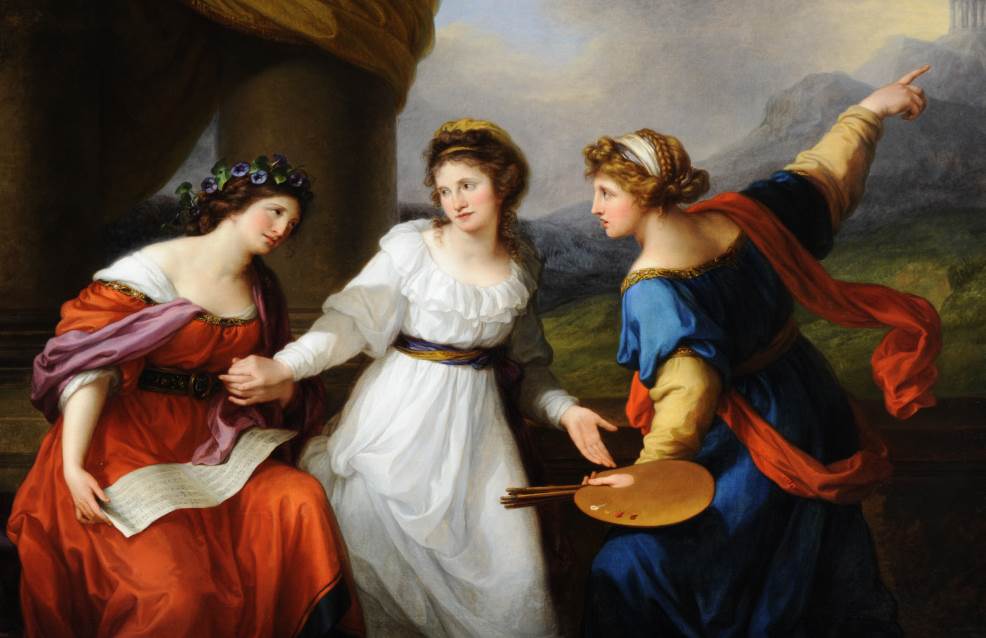
2. The Sorrow of Telemachus
- Date created: 1783
- Dimensions: 83.2 × 114.3 centimeters (32.8 45 inches)
- Location: MET Museum, New York City, United States
The Sorrow of Telemachus is one of the numerous Angelica Kauffman paintings that feature a mythological subject. In this case, she depicted the mourning Telemachus who asks her nymphs to stop singing in honor of Odysseus because of his son’s grief.
Despite the presence of mythological figures, the story was derived from a novel that was published in 1699 titled “The Adventures of Telemachus.” Kauffman painted two more versions of this painting in 1788 and 1789, one of which is held by the Bündner Museum of Art in Chur, Switzerland.
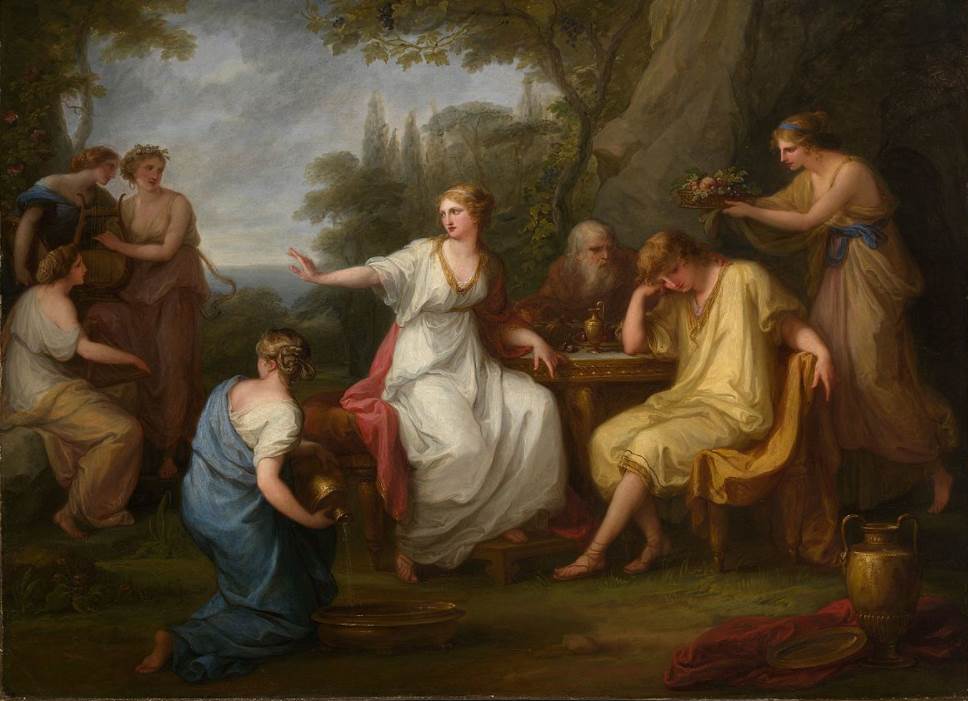
3. Ariadne Abandoned by Theseus
- Date created: 1774
- Dimensions: 63.8 × 90.9 centimeters (25.1 × 35.8 inches)
- Location: Museum of Fine Arts, Houston, United States
Ariadne Abandoned by Theseus is a painting completed by Kauffman while she was living in England in the early 1770s. It’s considered to be the only painting that the artist completed that depicts a single mythological figure.
At least, Ariadne is depicted prominently. She was the one who saved Theseus’ life after he was chosen to be sacrificed in the labyrinth of King Minos. Theseus’ ship can be seen sailing off as he leaves her following his escape from the deadly Minotaur inside the labyrinth.
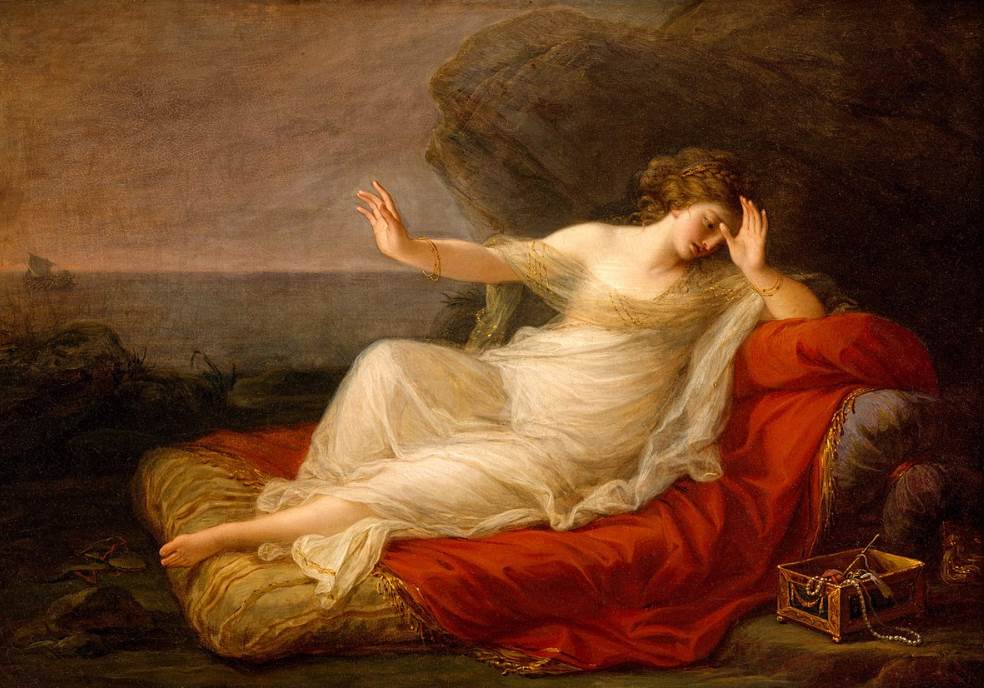
4. Portrait of Winckelmann
- Date created: 1764
- Dimensions: 97 x 71 centimeters (38.1 x 27.9 inches)
- Location: Kunsthaus Zürich, Switzerland
Angelica Kauffman moved to Florence, the capital city of the Tuscany region in central Italy, in the early 1760s. She became a member of the Accademia di Belle Arti di Firenze in 1762 and visited Rome a couple of years later.
Here she met the man who is considered to be the founding father of Neoclassicism, Johann Joachim Winckelmann (1717-1768). His writings laid the foundation of scientific archaeology and he transformed the world of art in the 18th century. Kauffman painted his portrait in 1764 and he was one of the people who write lyrically about her amazing charm.
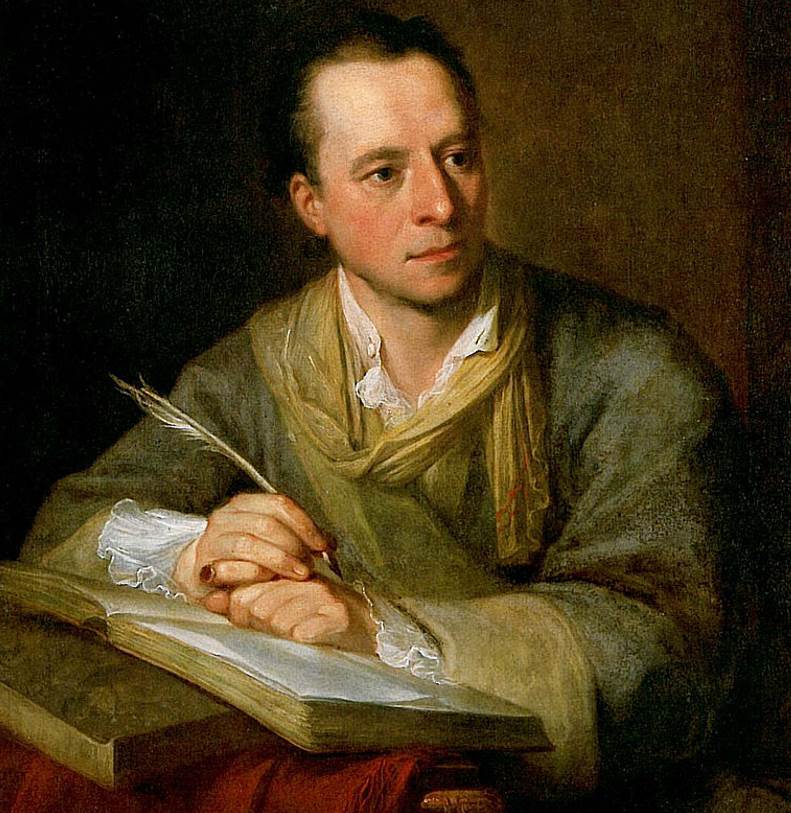
5. Telemachus and the Nymphs of Calypso
- Date created: 1782
- Dimensions: 82.6 × 112.4 centimeters (32.5 × 44.3 inches)
- Location: MET Museum, New York City, United States
Telemachus and the Nymphs of Calypso is a painting that was part of the same commissions as The Sorrow of Telemachus, two paintings that were commissioned by an Italian scholar named Onorato Caetani (1742-1797).
It’s another work that was derived from the novel “The Adventures of Telemachus” which was published by French author François Fénelon in the late-17th century. This painting depicts the arrival of Telemachus on Calypso’s island after being guided here by the goddess Athena who is disguised as an old man.
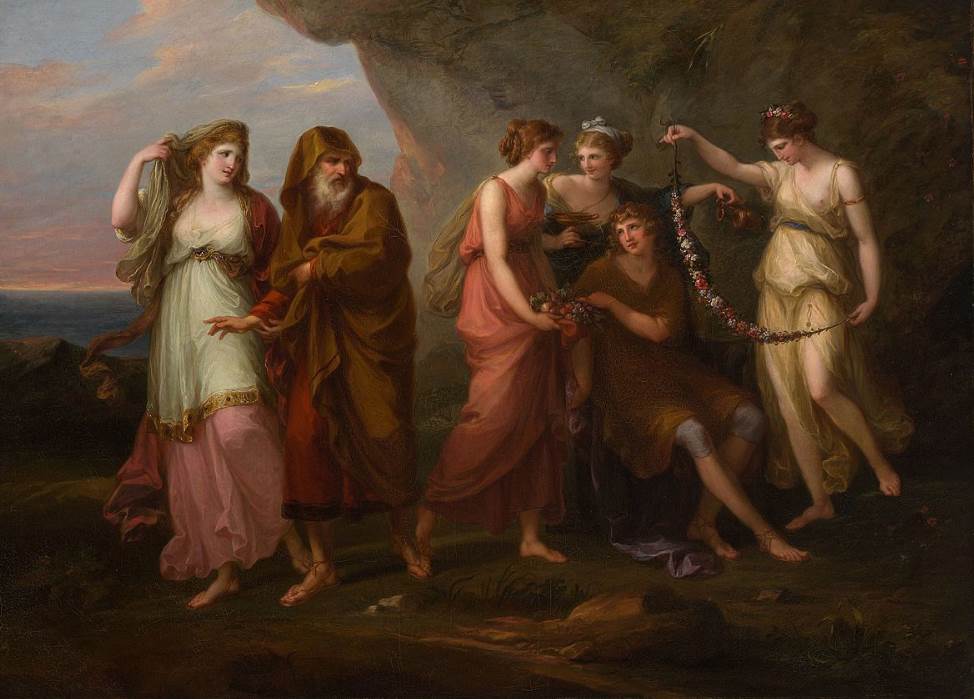
6. Pliny the Younger and his Mother at Misenum, 79 A.D.
- Date created: 1785
- Dimensions: 103 x 127.5 centimeters (40.5 x 50.1 inches)
- Location: Princeton University Art Museum, New Jersey, United States
Pliny the Younger and his Mother at Misenum, 79 A.D. is one of the most fascinating paintings in the collection of the Princeton University Art Museum. It depicts one of the most devastating events in ancient times, the eruption of the Vesuvius near Naples in 79 A.D.
We can see Pliny the Younger being told to flee but refusing to take this order. Pliny the Elder, a famous ancient historian, will sail toward the Vesuvius in an attempt to rescue a friend but find his demise instead. This event destroyed the ancient cities of Pompeii and Herculaneum.
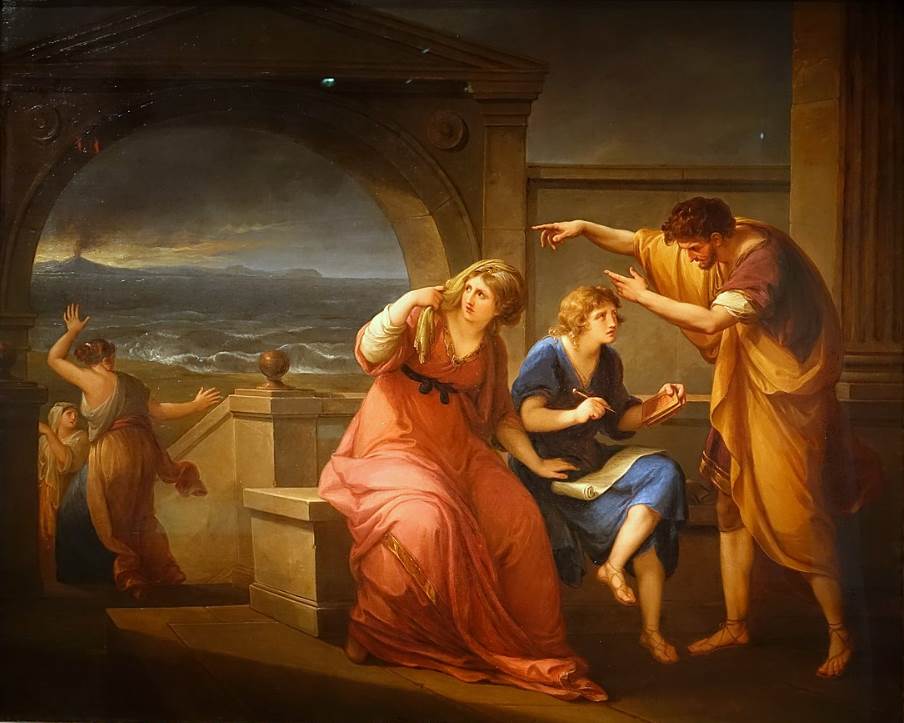
7. The Family of the Earl of Gower
- Date created: 1772
- Dimensions: 150.4 x 208.2 centimeters (59.25 x 82 inches)
- Location: National Museum of Women in the Arts, Washington, D.C., United States
The Family of the Earl of Gower is one of the most famous of several group portraits produced by Angelica Kauffman. It perfectly demonstrates the artist’s versatility as an artist as she managed to squeeze multiple figures into a harmonious composition.
The painting depicts Granville Leveson-Gower (1721–1803), a man who is also known as Viscount Trentham, Earl Gower, along with the first Marquess of Stafford. Gower was a politician and is depicted along with his extended family in a typical Neoclassical painting.
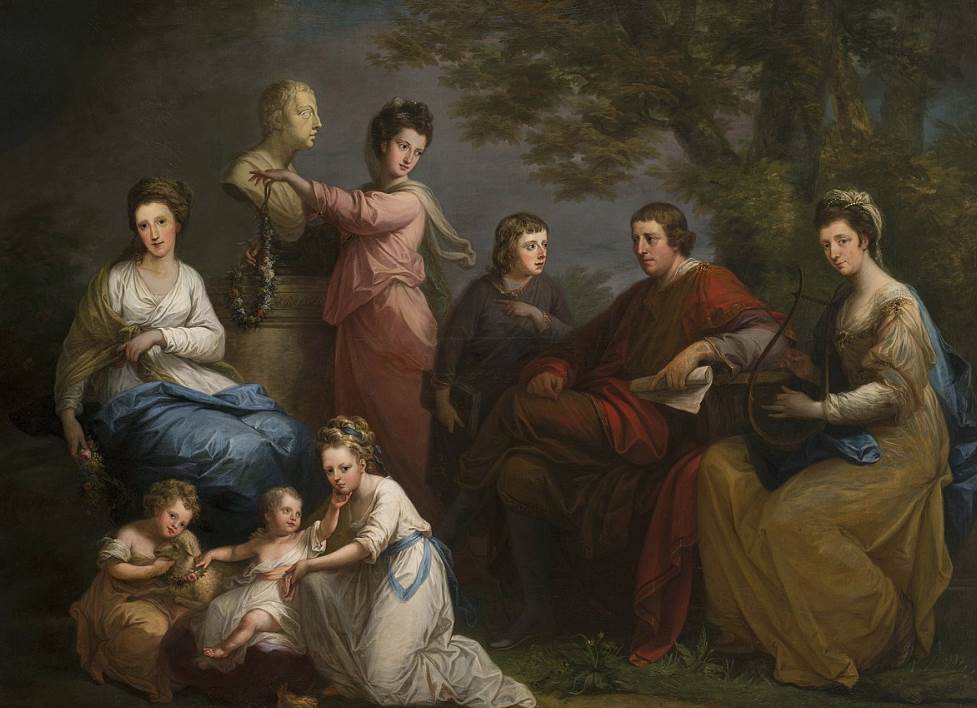
8. Portrait of a Woman as a Vestal Virgin
- Date created: 1780s
- Dimensions: 60 x 41 centimeters (23.62 x 16.14 inches)
- Location: Museo Nacional Thyssen-Bornemisza, Madrid, Spain
Portrait of a Woman as a Vestal Virgin is a painting that depicts a contemporary sitter wh is depicted wearing classical clothes. This was a popular way to depict a person at the height of the Neoclassical period in Europe.
Many elements are referring to the goddess Minerva, one of the main ancient Roman goddesses. A sculpture of Minerva can be found in the background and the serpent near the women was one of Minerva’s symbols. The waiting was based on a composition by Sir Joshua Reynolds called “Lady Sarah Bunbury offering a Sacrifice to the Three Graces” (1775).

9. Venus Induces Helen to Fall in Love with Paris
- Date created: 1790
- Dimensions: 102 x 127.5 centimeters (40.1 x 50.1 inches)
- Location: Hermitage Museum, Saint Petersburg, Russia
Venus Induces Helen to Fall in Love with Paris is a painting that was derived from Homer’s Iliad. We can see Venus is convincing Helen, the wife of Spartan King Menelaus, to fall in love with Paris, the Prince of Troy.
The result following this moment was Paris bringing Helen back to Troy, an event that starts a 10-year War between Sparta and Troy. The painting is part of the collection of the Hermitage Museum and a pen and ink preparatory drawing is part of the collection of the British Museum.
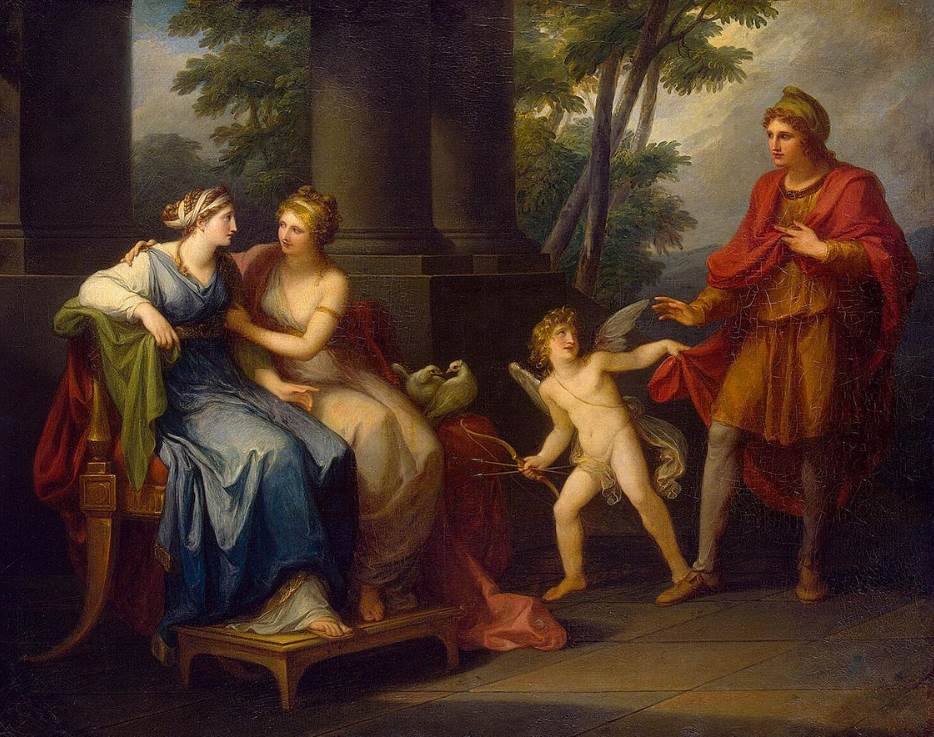
10. Ludwig I of Bavaria as Crown Prince
- Date created: 1807
- Dimensions: 224.6 x 146.8 centimeters (88.4 x 57.7 inches)
- Location: Neue Pinakothek, Munich, Germany
Angelica Kauffman spent her final years in Rome after she got married to Italian artist Antonio Zucchi (1726-1795). She contributed a final time to an exhibition of the Royal Academy in London in 1797 but painted relatively little during the final decade of her life.
She did make exceptions and produced a painting the year that she passed away titled “Ludwig I of Bavaria as Crown Prince.” Ludwig I (1786-1868) was still a teenager at the time. Shortly after, she received a splendid funeral directed by Antonio Canova (1757-1822), a great honor for this extremely talented artist.



